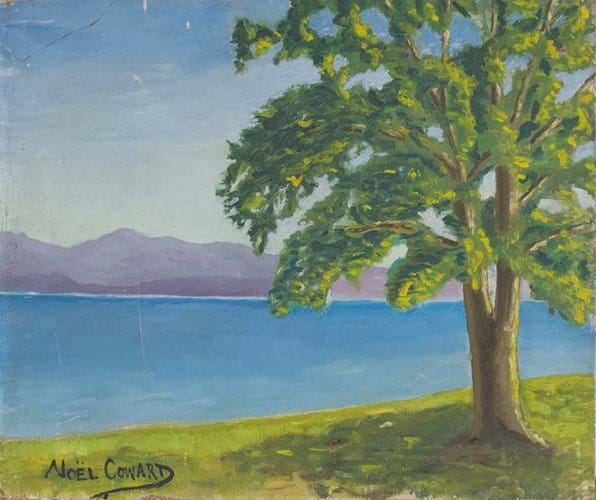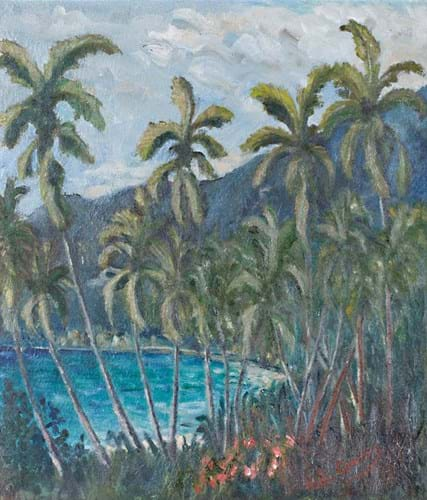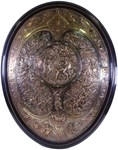Sir Oswald Birley (1880-1952) was one of Britain’s most successful portrait painters of the inter-war era.
Leading figures of the day – royalty, politicians, scientists and high society – went to him for the sort of well-painted likeness that was not going to frighten the horses.
While more radical artistic styles were developing at the time, his finely executed portraits, which were more formal and traditional in approach, provided the outward show of the refinement and stateliness that his patrons often desired.
This is not to say, however, that his portraits lacked individuality and he was certainly not averse to adding some striking touches conveying the serenity, tenderness and personality of his sitters too.
The artist, born in New Zealand to British parents, has long had plenty of admirers, something especially engendered by his best-known portraits.
Among the most prominent was a painting of Sir John Reith from 1934 (a work known as the ‘director general portrait’) which still owned by the BBC and five portraits he made of Winston Churchill, the most famous of which from 1946 is in the collection of the Houses of Parliament.
Indeed, many of Birley’s portraits remain with the families and institutions that commissioned them. The artist is one of the most represented in UK public collections – the Art UK database records 173 works in museums and National Trust properties.
In the public eye
While works occasionally appear on the market, a sign of growing commercial appreciation was the exhibition of 50 of Birley’s portraits held at the Philip Mould gallery in 2017.
More recently, a chance to assess demand at auction was provided by Toovey’s (24.5% buyer’s premium) in Washington, West Sussex, on February 3.
A portrait of Sir Gordon Cunard Bt (1857-1933) – a member of the historic shipping dynasty – came from a local collector who, to the saleroom’s best knowledge, had owned it for many years.
Signed and dated 1930, the 4ft 1in x 3ft 3in (1.25 x 1m) oil on canvas was housed in a Louis XIV-style gilt composition frame. It was in generally good condition, although it had been restored with some retouching to the nose, moustache, the sitter’s left arm and the background. Stretcher lines were also visible across the centre of the image.
Sitter significance
While condition naturally plays an important role in determining values, the key commercial factor when it comes to a Birley portrait is the prominence of the individual sitter – his highest prices at auction have come for a late portrait of Churchill from 1950 and another earlier one of the Duchess of Roxburghe.
This work at Toovey’s was something of a curate’s egg in this regard. In its favour, the sitter here was from a prominent family.
Two years after Sir Gordon was born, the Cunard baronetcy of Bush Hill in Middlesex had been created for his great-grandfather Samuel Cunard (1787-1865), the Canadian-born British shipping magnate who founded the Cunard Line (the first company to be granted a British transatlantic steamship mail contract).
Against it, it was unclear what involvement Sir Gordon had directly in the firm, if indeed any at all, and so its appeal to shipping enthusiasts may have been limited in this regard.
Also there was the inevitable commercial factor that the subject of an ageing aristocrat in hunting garb was less attractive than a society hostess for example.
This picture, though, was clearly a significant commission and, as an exercise in painterliness, it demonstrated the artist’s mature technique.
Such works are not common on the market and the fact that it represented a rare opportunity to own one meant it drew plenty of interest, especially against its estimate of £400-600. With a number of admirers willing to spend much more, it was knocked down at £10,000 to an overseas bidder on the phone.
The price indicated that high-quality Birley works continue to bring solid demand. The sum fetched was within in the top 10 auction prices for the artist and the highest since Christie’s sold an oil sketch of his son Mark Birley (1930-2007) as a boy for £26,000 in November 2018 (source: Artprice by Artmarket).
It also eclipsed the £5500 for a sensitive portrait of the artist’s father sold at Mellors & Kirk in May last year (reported in ATG No 2443).
Coward boasts appeal
Elsewhere at the West Sussex sale, three paintings by the actor, playwright and singer Noël Coward (1899-1973) drew good bidding against estimates of £300-500.
Pictures by the impresario have a decent following at auction, especially his bright views of the Caribbean painted while he resided at Firefly Estate in Jamaica, such as the works here which came to auction from a local Coward collector.
The amateur artist once wrote in his diary: “Compared with the pretentious muck in some London galleries… my amateur efforts appear brilliant.”
Some of his paintings were given to friends and associates as first-night or birthday presents, while a few he consigned to charity auctions (although Coward’s biographer Sheridan Morley said he feared ‘celebrity snobbism’ might make them valued more for the signature rather than for their intrinsic worth).
First up at the Toovey’s sale was Tree on the Edge of a Lake, a 20in x 2ft (51 x 61cm) signed oil on canvas that had a dedication on the verso To Joyce Carey Love N.C. – a reference to the English actress with whom Coward shared a long professional and personal relationship (she acted as his confidante, adviser and emotional support).
Although it suffered from two small holes, some scratches and some paint loss to the edges, it sold at £1500.
A smaller view of a Jamaican hut took £1400 but the pick of the three paintings was Blue Harbour, a 13½ x 15½in (35 x 40cm) oil on panel which was a breezy coastal scene in good original condition. A number of interested parties deemed the £300- 500 guide highly attractive and took it to a final £2000.
While Coward’s works have made over £20,000 at auction before (normally they need the presence of figures to reach the heights of the market), these smaller and simpler works were at the more affordable end of the market.

















